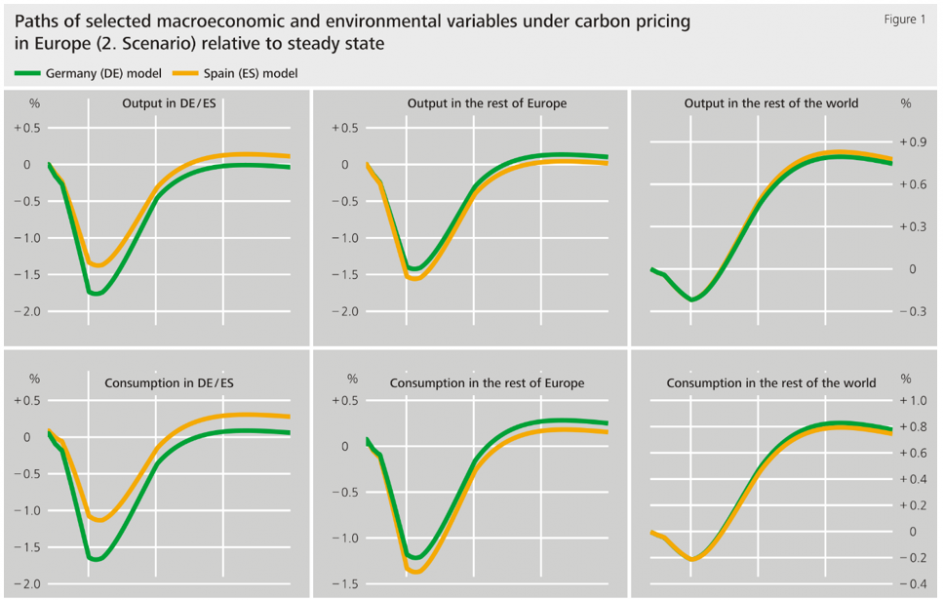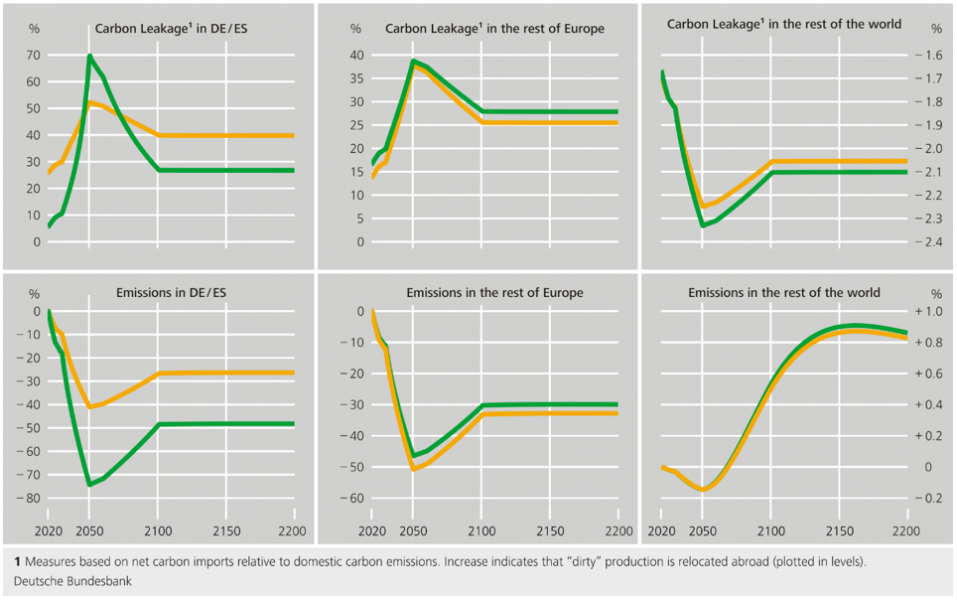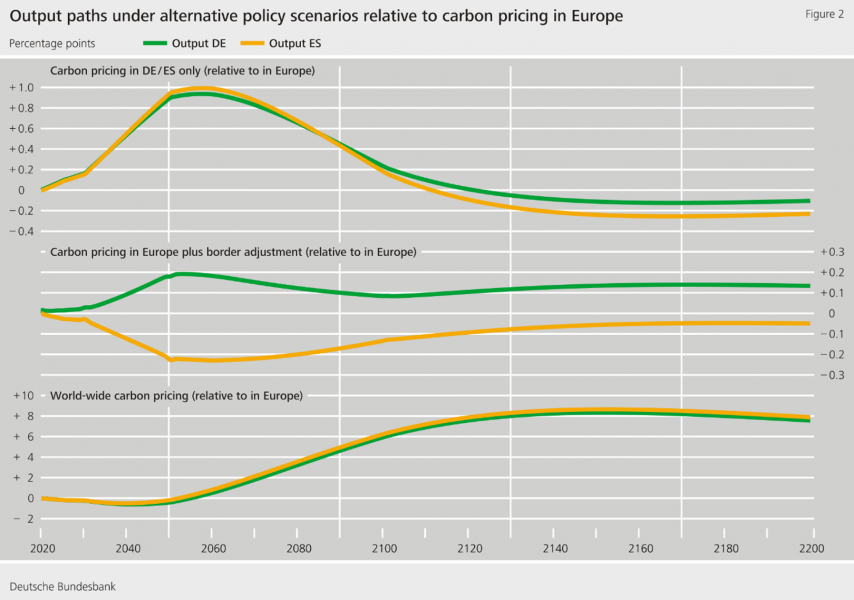References
Ernst, A., N. Hinterlang, A. Mahle and N. Stähler (2023). Carbon pricing, border adjustment and climate clubs: Options for international cooperation. Journal of International Economics 144 (103772).
Hinterlang, N., A. Martin, O. Röhe, N. Stähler and J. Strobel (2023). The Environmental Multi-Sector DSGE model EMuSe: A technical documentation. Technical Paper 03/2023, Deutsche Bundesbank.
Hinterlang, N. (2023). Effects of Carbon Pricing in Germany and Spain: An Assessment with EMuSe. Working Paper N.° 2328, Banco de España.
NGFS (2022). NGFS Climate Scenarios Database. Technical Report, September 2022, Network of Central Banks and Supervisors for Greening the Financial System.
Timmer, M. P., E. Dietzenbacher, B. Los, R. Stehrer and G. J. De Vries (2015). An illustrated user guide to the world input-output database: The case of global automotive production. Review of International Economics 23(3), 575-605.






